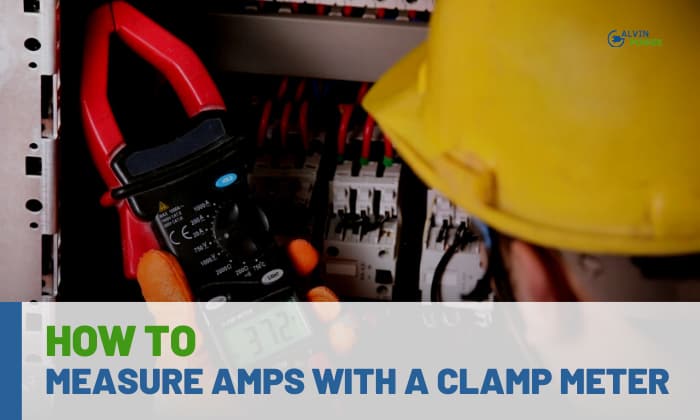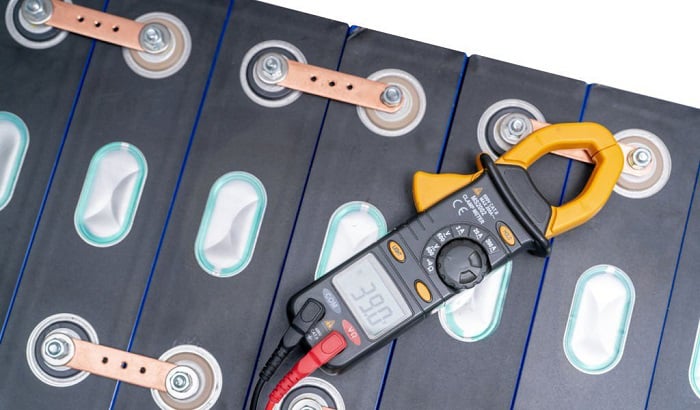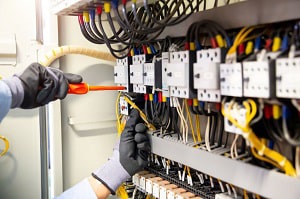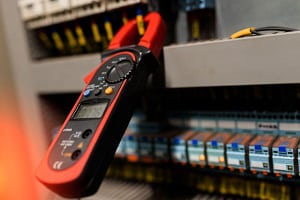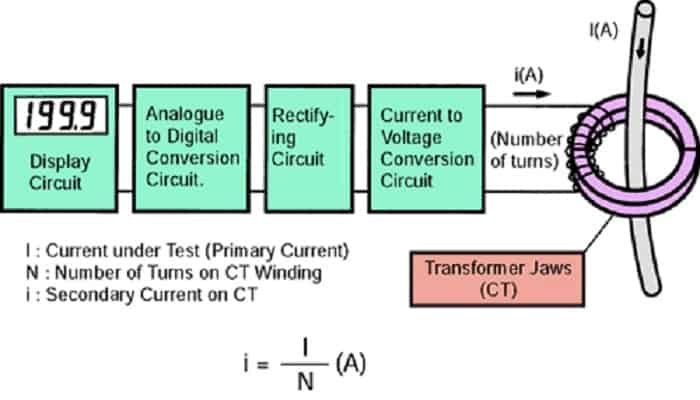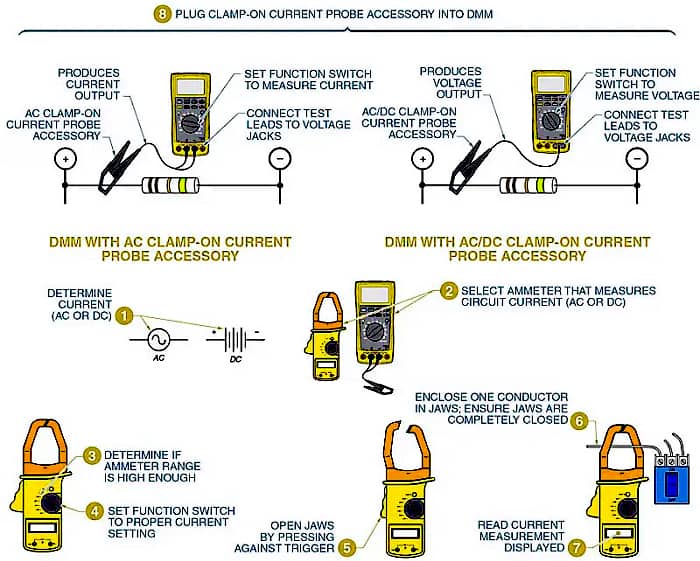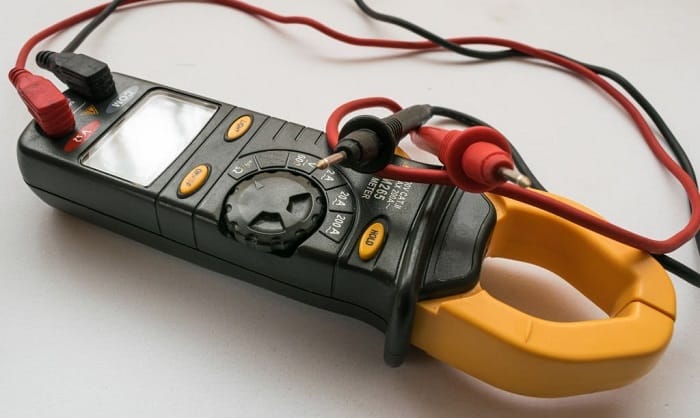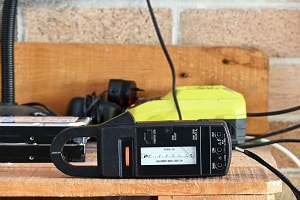A clamp meter is a popular tool electricians use to safely and accurately measure the current flowing through a wire. With a fluke clamp meter or any brand, you can get an accurate reading of the amp rating safely and efficiently.
This article will guide you through measuring amps with a clamp meter. Read on to see easy-to-follow instructions on how to measure amps with a clamp meter, suitable for beginners and experienced professionals.
Table of Contents
Steps to Measure Amps with a Clamp Meter
Here’s how you can use a clamp meter to measure amps rating of any electronic device.
Step 1. Prepare All the Tools you Need
Before measuring amps with a clamp meter, you need to prepare first all the necessary tools for this application. Typically, you will need the following:
- A clamp meter
- The electronic device you want to measure
- A power supply
- A line splitter – Please note that in terms of line splitter, you have two options. First is to buy a premade line splitter which you can purchase on any marketplace or make a DIY line splitter to save some money. Any of these will do as long as it can separate all the conductors and ground.
Step 2. Complete the Circuit
Once you prepare everything you need, you can connect them and complete the circuit.
Start by plugging the line meter into the power supply and connecting the electronic device to the line meter. Test to make sure the device is working properly.
Remember that any device you want to know the amp rating should run through the line splitter since this is where you place the clamp meter to read the amp rating.
Step 3. Measure Amp Draw with Clamp Meter
Before using a clamp meter to measure the amp rating of the device, ensure that the device is turned on and working properly.
Then set the meter to “current” and clamp the meter to any of the lines or wires of the splitter. Make sure to measure per wire and not both at the same time.
- If you use a clamp meter to measure ac current in a two-wire line splitter, any of these lines will have the same reading. This is because these lines are the two conductors, the neutral and hot electrical connections.
- However, the ground connection should have no reading when clamping in three line splitter. If there is a reading, you may want to check the circuit since you may have a serious problem with it.
How Does a Clamp Meter Work
A clamp meter is an essential tool to read the current rating of a circuit. However, aside from using a probe, it can also operate by clamping its jaws around the conductor wire.
It is also good to know that the current flowing through any device’s wire can produce a magnetic field. As a clamp meter working principle, it is equipped with a coil that can detect a magnetic field when the clamp jaw is closed.
As a result, when you ac/dc clamp meter to any wire conductor, it will read the value of the current that flows through that circuit.
This feature makes them ideal for use in live circuits and in situations where shutting off the power is not possible or desirable.
If you want to familiarize yourself with the various components of a standard clamp meter, refer to the image below, which identifies all the parts.
Locating Branch Circuits by Using Clamp-on Ammeters
When working on an electrical system, it is crucial to identify the specific branch circuit before shutting it off to prevent any unintended consequences or further issues. This is where a clamp-on ammeter can be a useful tool.
Indeed, you can use most electricians’ tricks, which use digital clamp meter and a flashing lamp. They connect the flashing lamps on the specific circuit and use a clamp meter to detect this current on the panel board, like the image shown below.
Frequently Asked Questions
Clamp Meter and Multimeter: What is the Difference?
Both a multimeter and a clamp meter measure voltage and current. However, a multimeter is mainly for voltage, while a clamp meter is specialized for current.
The primary difference is that a clamp meter has a hinged jaw that can be clamped around a conductor for current measurement. At the same time, a regular multimeter requires test leads to be connected to the conductor.
How Accurate is a Clamp Meter?
Several factors determine the accuracy of a clamp meter, including its make and model, component quality, and operating environment.
Although most clamp meters have an accuracy range of 150-170 milliamps, factors such as conductor position in the jaws, electromagnetic interference, and device temperature can affect their accuracy.
Can You Use a Clamp Meter to Measure kWh?
Clamp meters measure only electrical current, not power or energy. However, if you want to measure kWh, it’s advisable to measure both voltage and current with a Klein clamp meter or any brand and consider its power factor as well as usage time to calculate energy usage in kWh.
How to Use a Clamp Meter to Measure DC?
If you want to use clamp meter to measure dc current, here is what you need to do.
The same as AC, to check battery amps with a clamp meter, you must ensure that the circuit is complete. Set the meter to the expected amount of current and clamp it to the wire. Then take note of the reading.
Conclusion
To sum up, measuring amps with a clamp meter is a simple and effective process that can save time and increase safety for electricians and technicians. Moreover, by following the proper procedures above, you can easily learn how to measure amps with a clamp meter.
Remember, understanding the limitations and factors that can affect the accuracy of the clamp meter can help ensure reliable results. Overall, a clamp meter is a valuable tool in electrical measurement and should be included in the toolkit of any professional in the field.

I am Edwin Jones, in charge of designing content for Galvinpower. I aspire to use my experiences in marketing to create reliable and necessary information to help our readers. It has been fun to work with Andrew and apply his incredible knowledge to our content.

